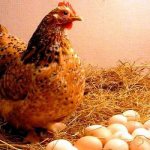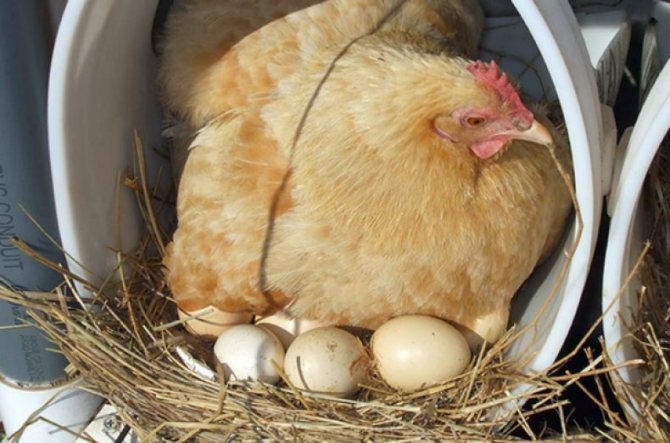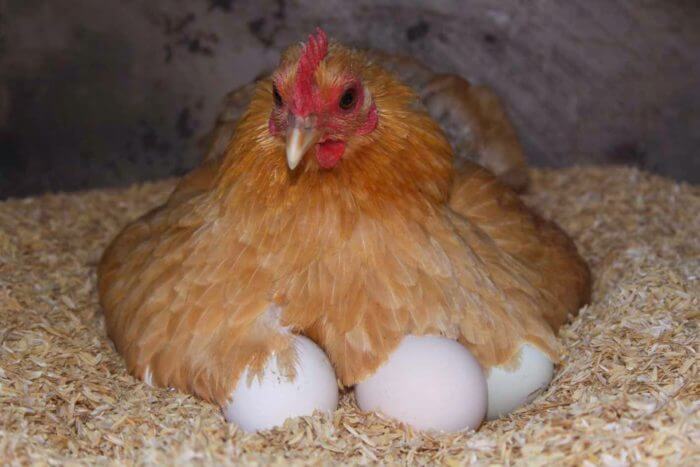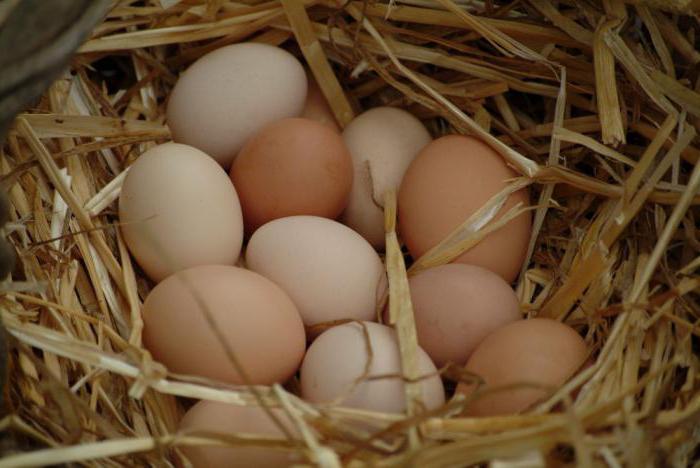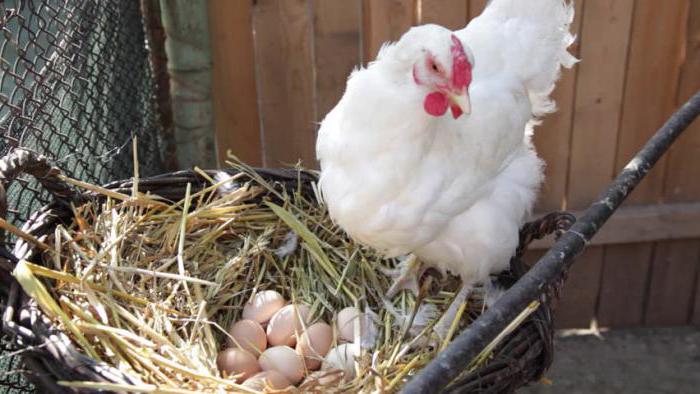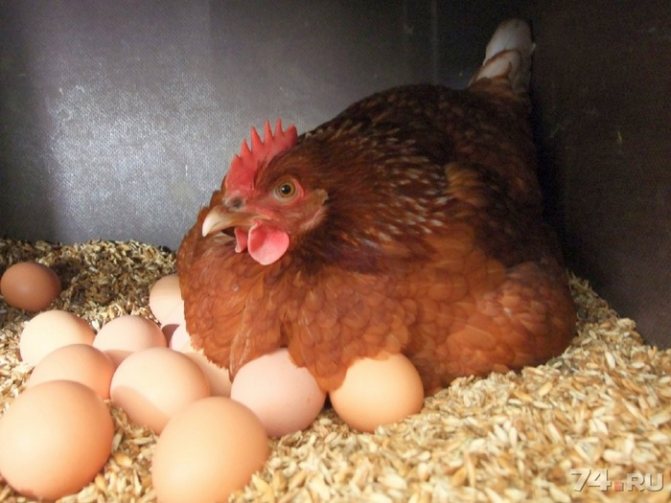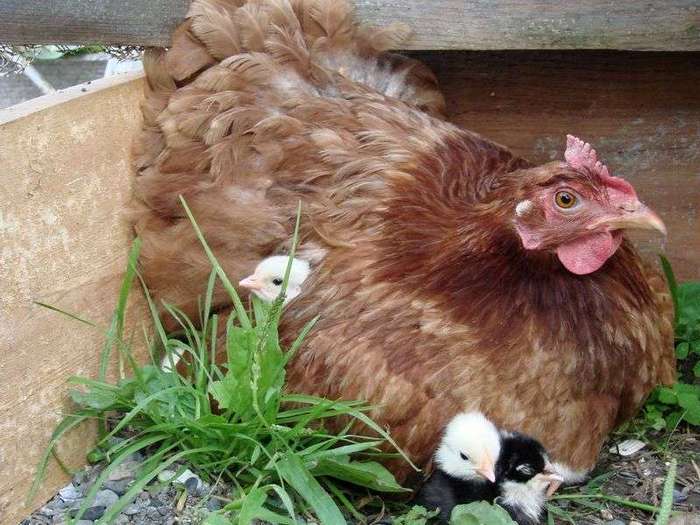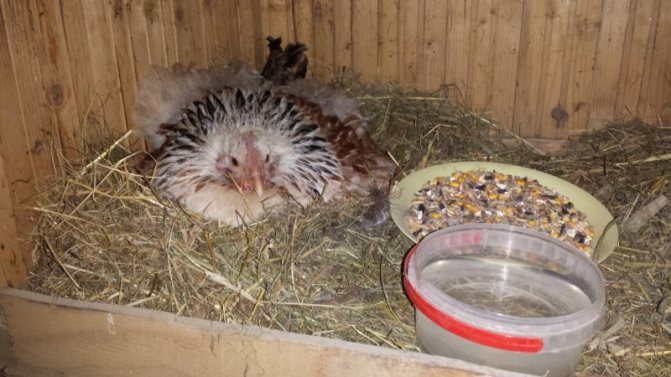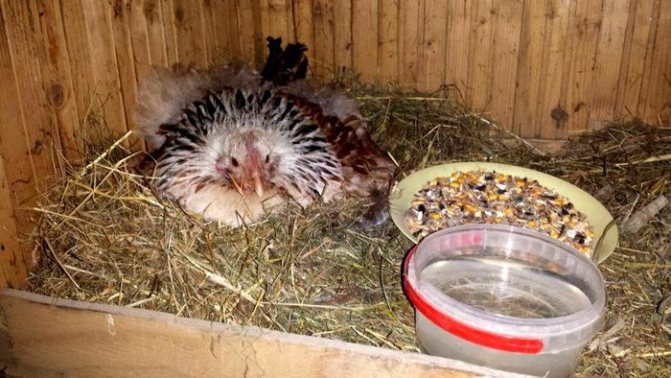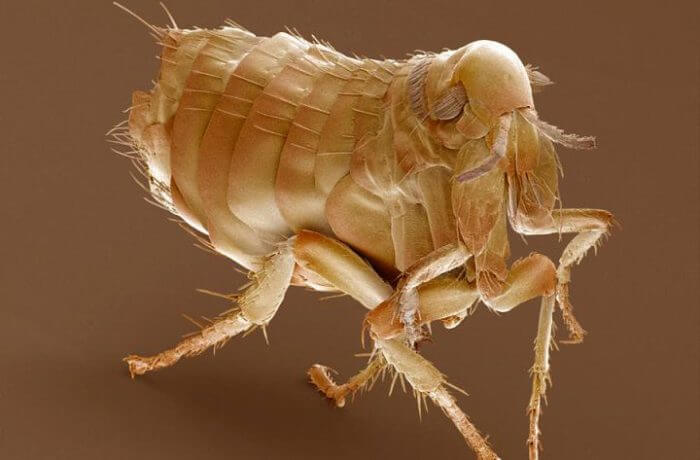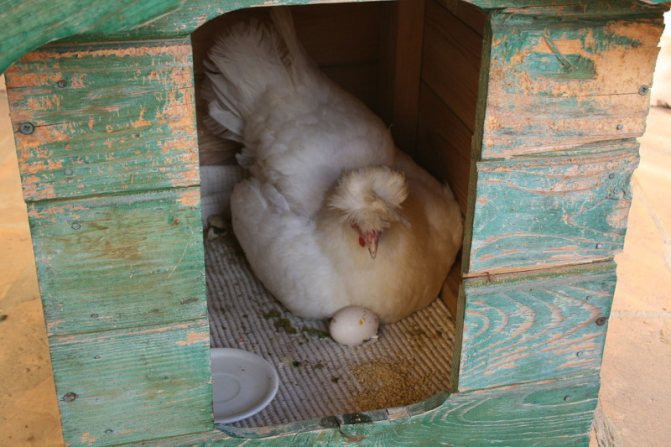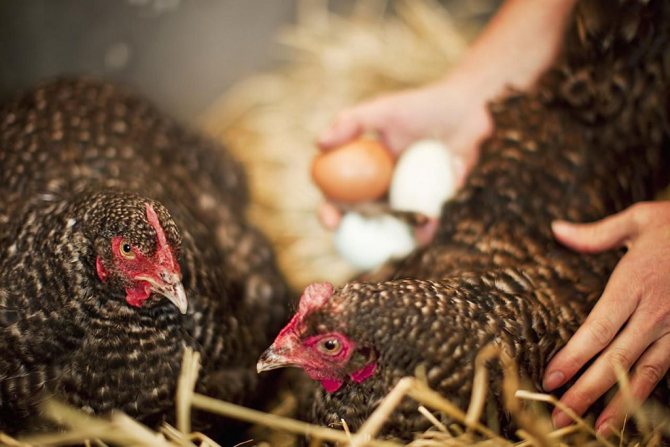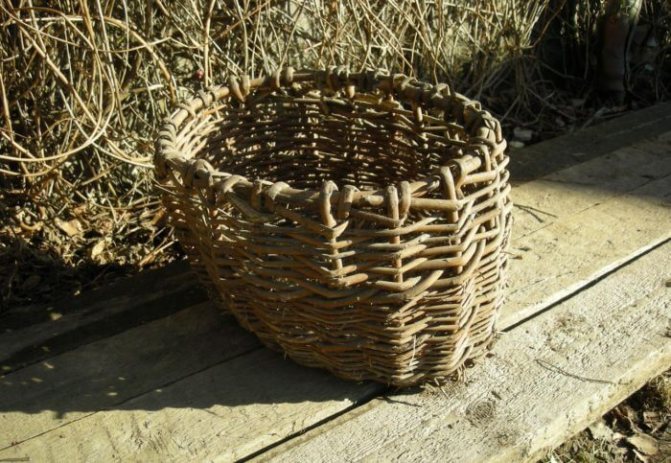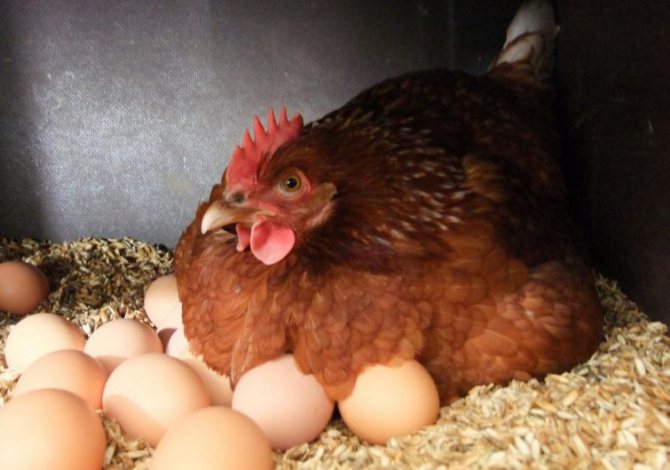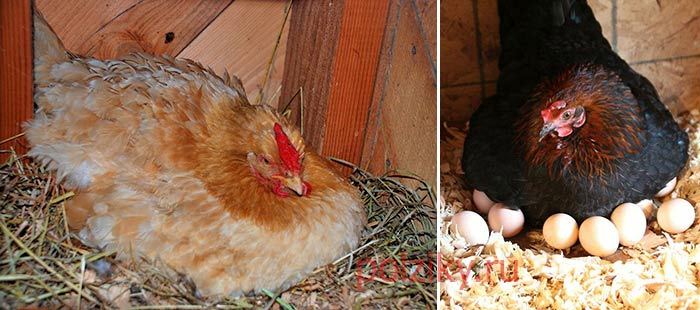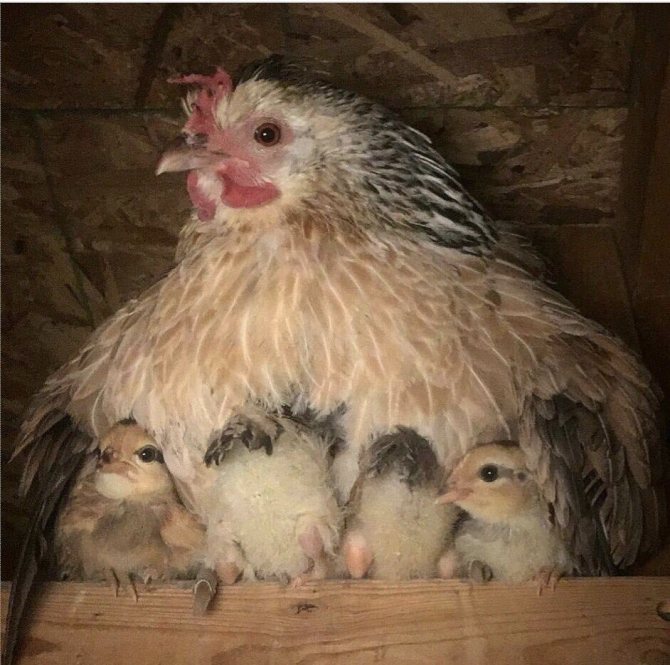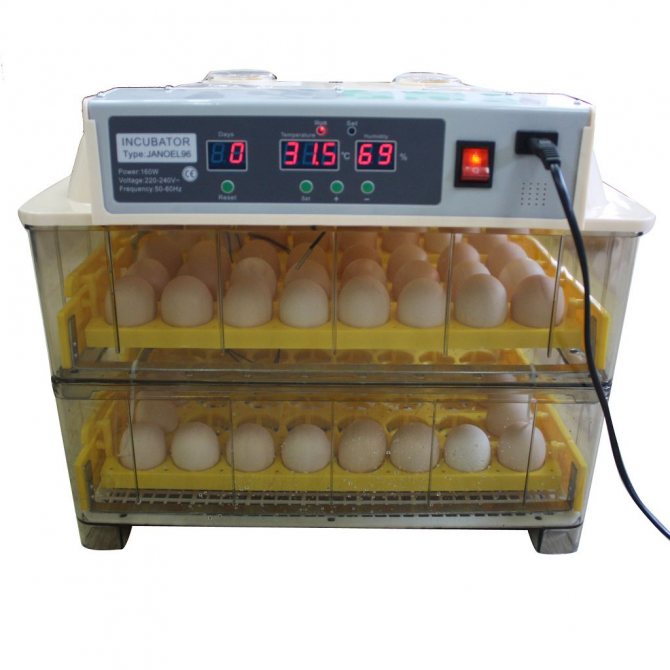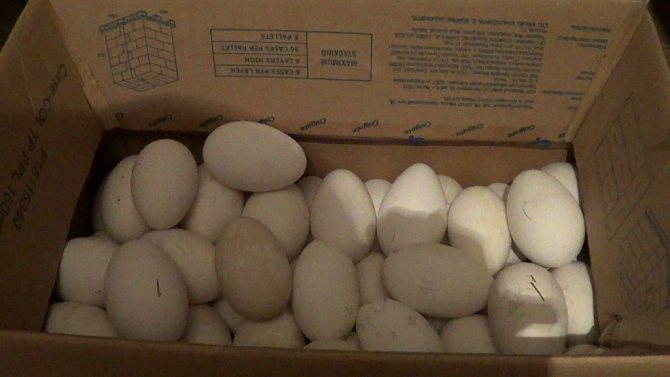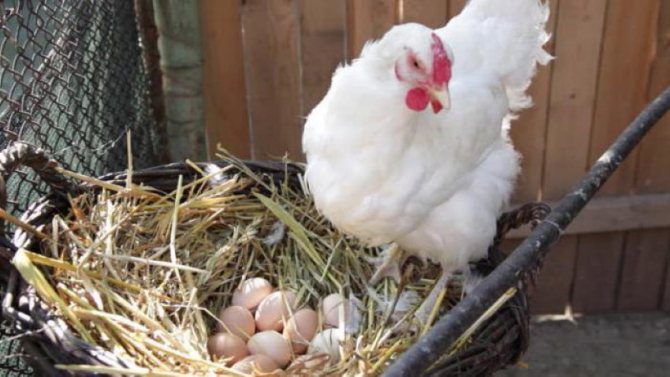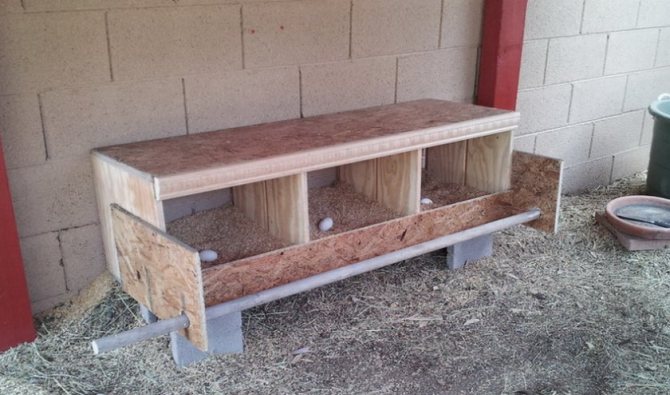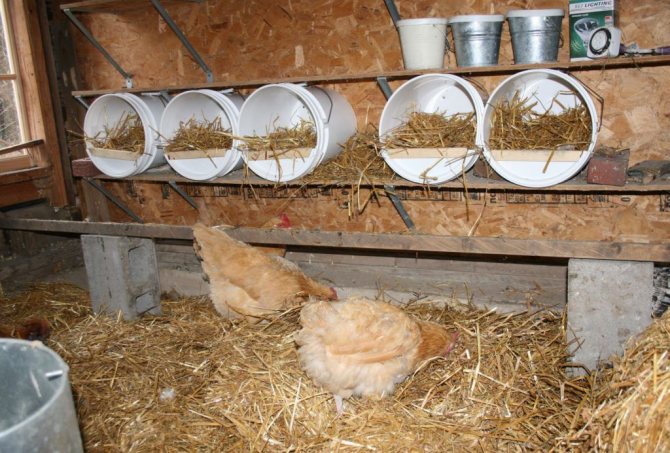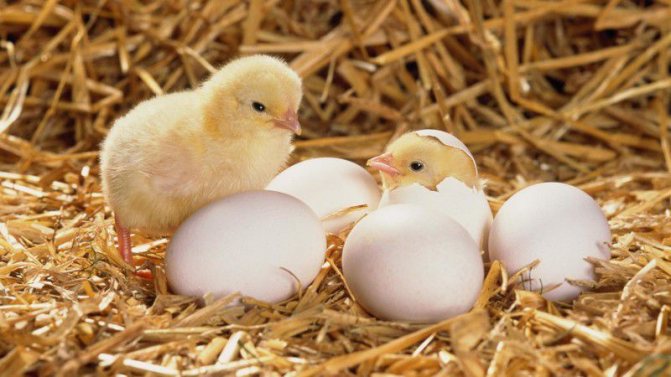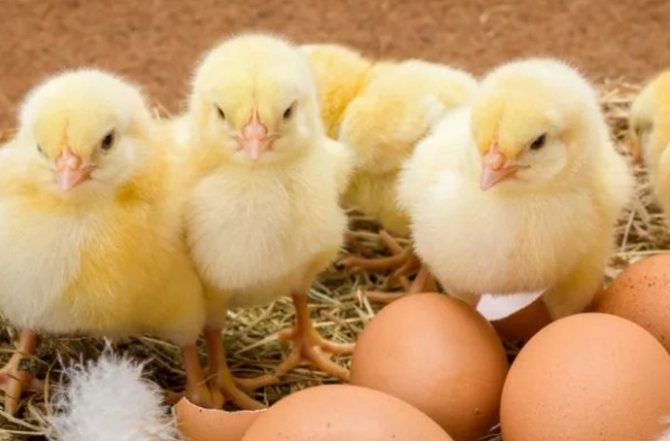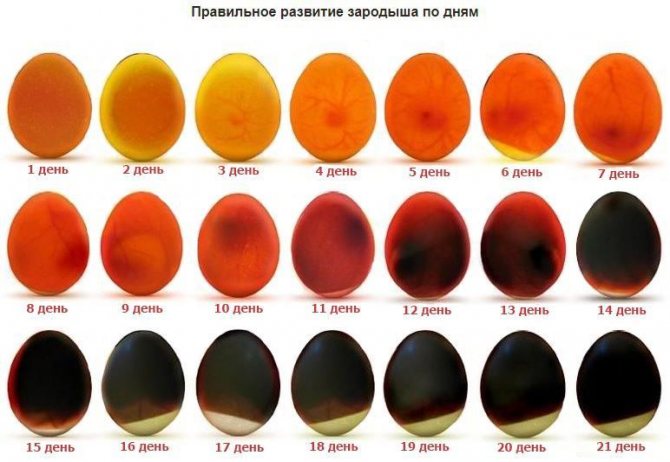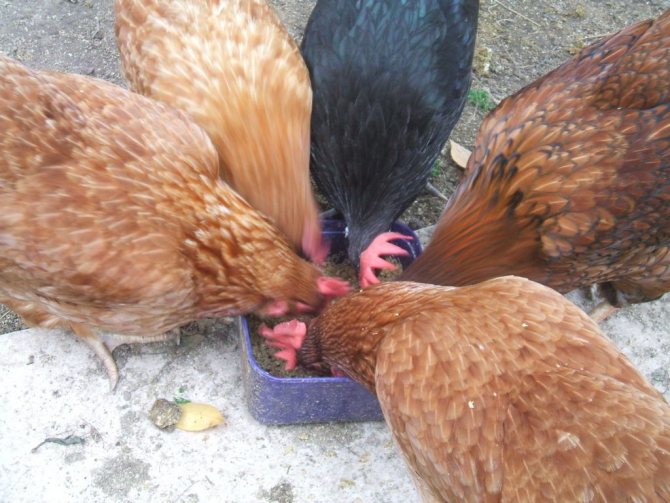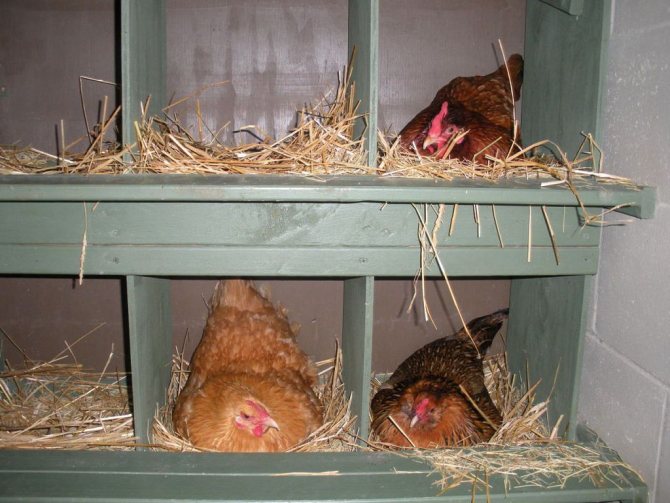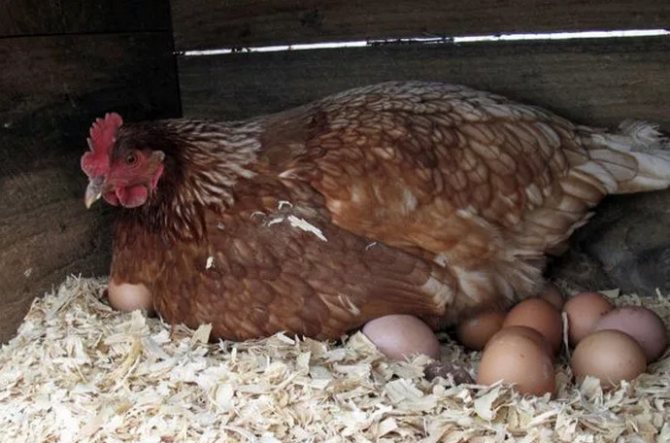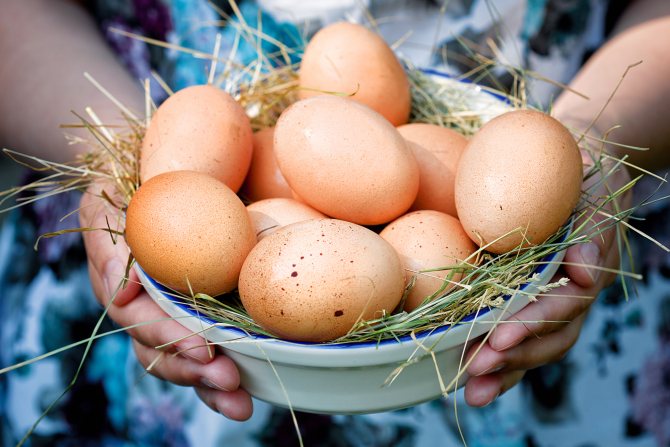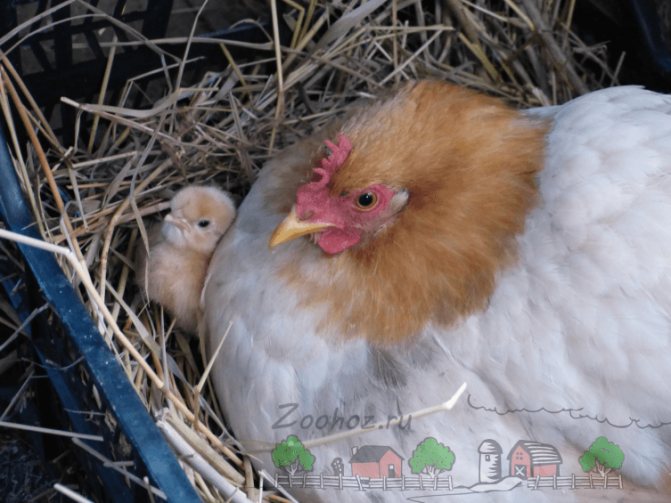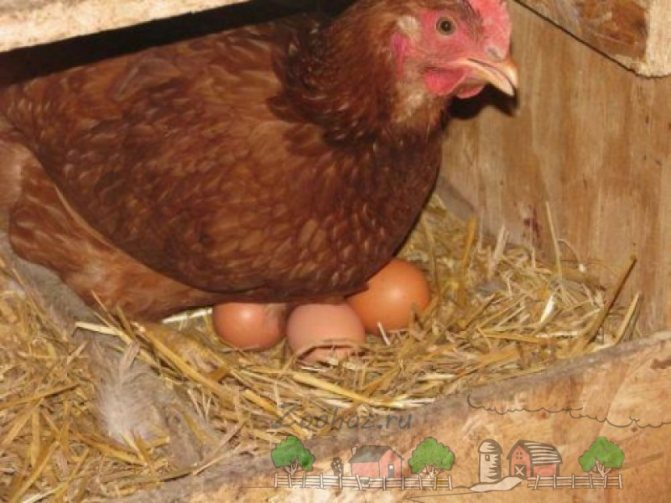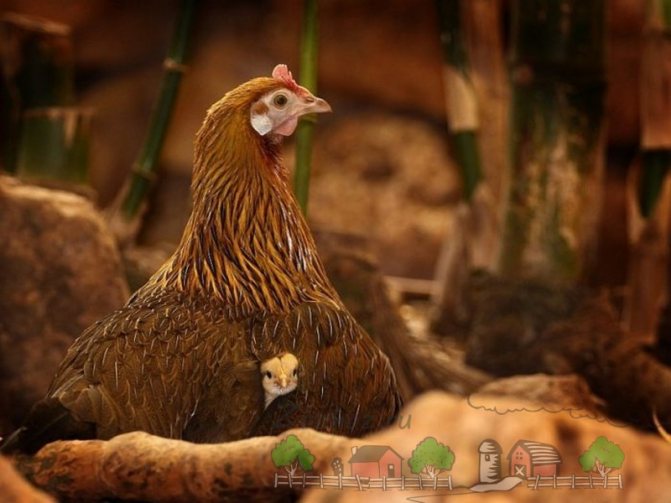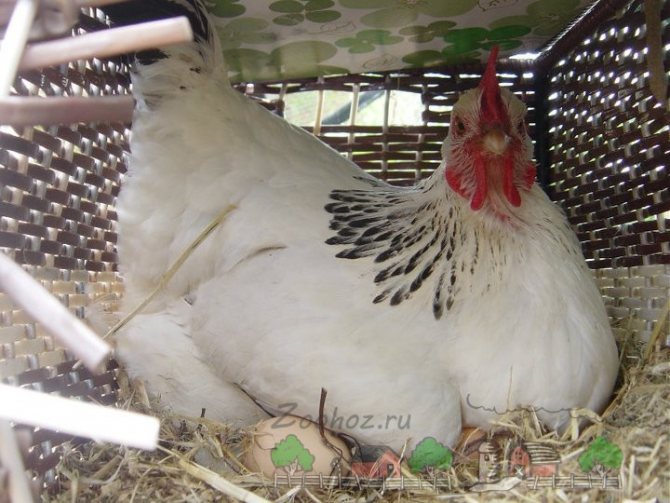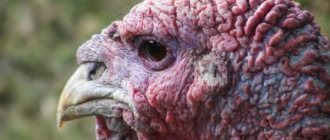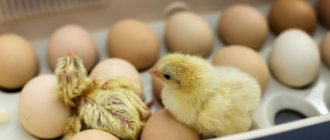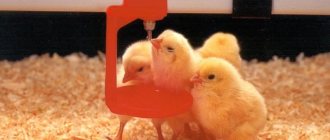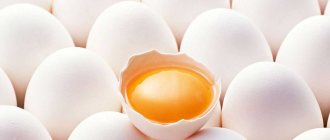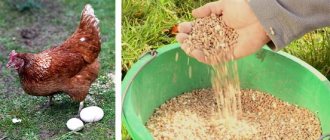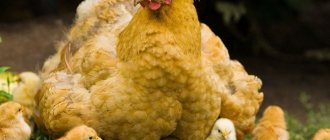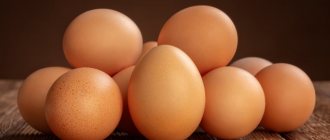When do chickens lay?
Chickens have a biorhythmic cycle from nature, this determines the slowdown or complete cessation of egg-laying in winter. In the spring, chickens begin to lay again. With the onset of cold weather, birds begin to molt, in this regard, egg production in layers decreases, although it does not stop completely. Some breeds of chickens continue to lay well in winter, if they are provided with warmth and light in the room.
It is known that chickens are of meat, egg and meat-and-meat directions.
The start of laying eggs in chickens depends on their breed. Egg breeds begin to lay earlier than others.
The start of lay depends on the time of hatching. Those birds that hatched in the winter and spring begin laying earlier than others, and the summer brood later than others. Chickens of egg breeds begin to lay in 17-19 weeks. Meat breeds after 22 - 23 weeks. Meat breeds - after 28 weeks.
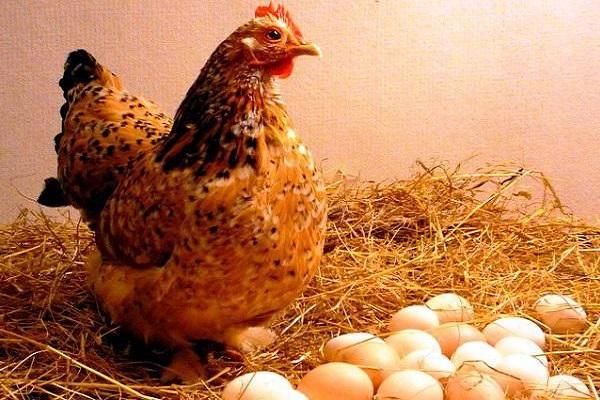
How to choose a good brood hen?
As a brood hen it is necessary to choose a hen, a healthy, normally developed individual, which showed good egg production during the season. Only then can you get good chicks. First, you need to observe the behavior of the herd of poultry. A chicken with an awakened maternal instinct stops rushing, rarely leaves the nest into the yard, resists when trying to drive it away. Feathers and down can be found in the nest; it clucks constantly with characteristic sounds. In addition to these signs, you can check the body temperature, it is slightly elevated.
A chicken with such signs can be checked in another way. Within 2-3 days, plant it in a nest with laying eggs made of foam or other materials. A bird with a good brooding instinct will sit quietly on dummies.
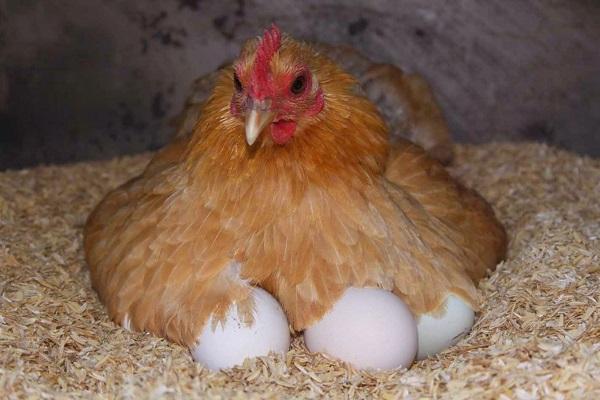

This means that it is suitable for laying hatching eggs. Experienced poultry farmers identify the brood hen by its comb, which turns from pale pink to bright red and increases in size.
Important! If there is no suitable individual among the chickens, and the number of birds must be increased, then the instinct of motherhood can be forcibly awakened. To do this, a healthy and thoroughbred hen (middle-aged) is planted in a nest, then covered with a lid for 3-4 days, letting out to eat and drink. In most cases, the bird begins to give signals of readiness for motherhood..
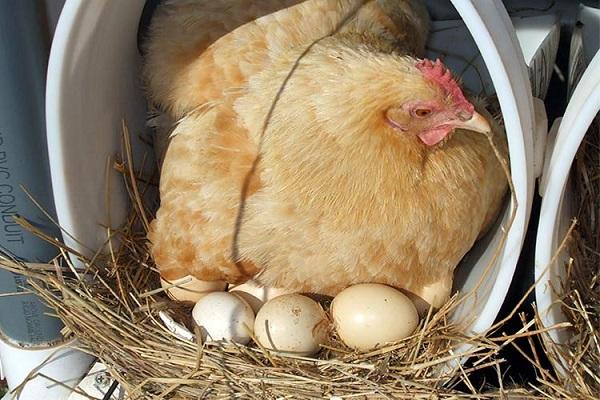

Incubation times for different birds
Usually, an odd number of eggs are placed under the hen, so it is more convenient for her to distribute them under her in the nest, not only under the chicken, but also under the rest of the bird. It is important that the eggs do not have parasites that bother the chicken - it will not sit well on such eggs. If you find parasites, sprinkle the feathers with a special powder, and put ash and a little naphthalene into the nest under the bedding.
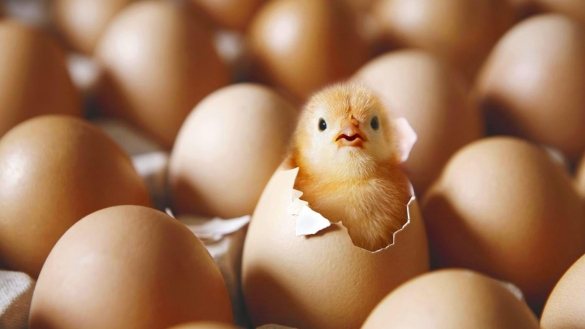

The table shows the number of eggs recommended for incubation.
| Hen | 15-17 eggs. |
| Goose | 9-13 eggs. |
| Duck | 13-17 eggs. |
| Turkey | 15-19 eggs. |
In order to hatch offspring, a chicken needs 21 days, a goose - a month, a duck - 28 days (while musky, or so-called Indo-Ducks, hatch ducklings after 35-36 days). Therefore, due to the difference in incubation times, it is useless to put duck eggs next to chicken eggs or fresh eggs to those on which the chicken sits for several days.Eggs that are laid later, the bird will not incubate - it will bring out the first batch and leave the nest.
But a hen perfectly incubates, for example, duck eggs, sits until the ducklings hatch, and then takes care of them, guides and protects them like family. Oddly enough, wonderful hens are obtained from turkeys - sometimes much better than from turkeys.
When a brood hen incubates chicks, both factory and hatchery can be added to the company. The chicken accepts other people's chickens almost always, but it is desirable that they are day old chicks.
But even with ducklings, even with their own chickens, even with hatcheries, the chicken will walk no more than a month. A month later, her maternal instincts are completely turned off, she abandons them and begins again to lead the life of a childless bird.
How to put a hen on eggs
Before planting a quail on eggs, you need to select a good lining material, prepare a place for a nest in a warm and safe room.
Egg selection
The selection of eggs for incubation has its own requirements:
- Eggs should be taken from healthy laying hens without signs of disease.
- The laying hen must show signs of puberty.
- Eggs for lining should be taken from the chicken, only fresh, after laying they remain fresh for up to 6 days. The incubation material must be clean and free of cracks.
- Select backing material of the same average size.
- To accurately determine fertility, eggs can be checked with an ovoscope.
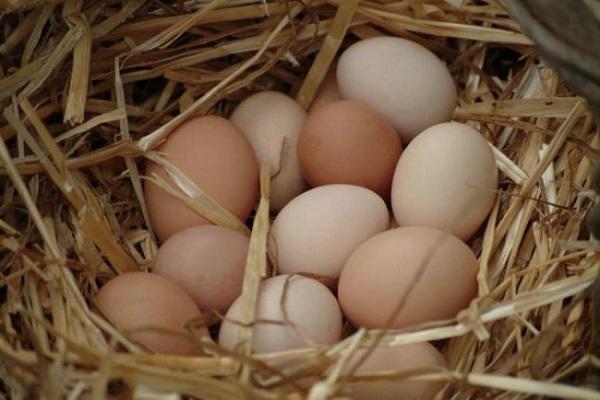

Important. The egg shell has a porous structure. Do not wash or wipe them before laying under a hen..
Site preparation
After you have found the hen and the required number of eggs, you need to prepare the nest for incubating chickens.
The nest can be of different shapes, it should be cozy, preferably wooden. You can make it from willow twigs, weave it from a bundle with dimensions 60 by 50 cm, with a depth of about 30 cm. The bottom of the box should be covered with a bedding of dry straw, leaving a recess in the middle for the eggs so that they do not roll out to the sides. A box with a hen is placed in a dark, quiet place not high from the floor.
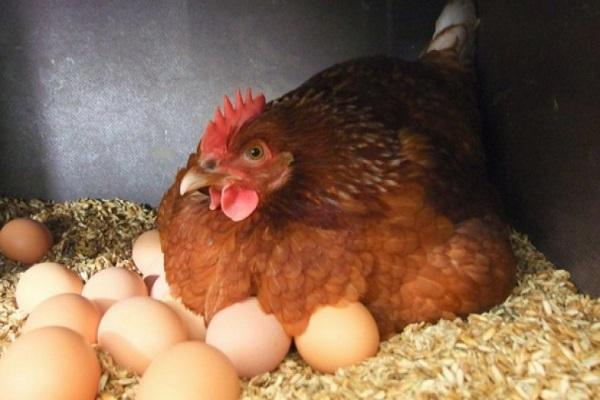

The appearance of young animals
As already noted, chicks are born 19–21 days after the formation of the clutch. At this time, it is necessary to carefully monitor the nest and, as they hatch, take the chicks from the hen, since with the appearance of the first of them, the chickens often get out of the nest.
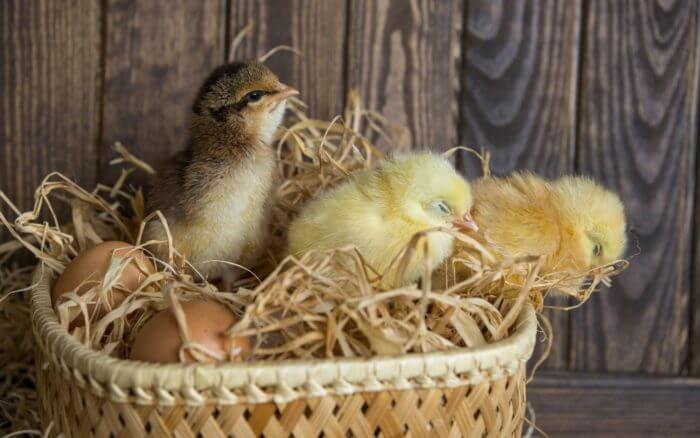

The baby is taken away a couple of hours after hatching, when it is completely dry. It is placed in a cardboard box with a cloth lined on the bottom. Then the box is taken into the house and a temperature of at least 26 degrees is created next to it. As they hatch, all the chicks are put in a box. When the last babies appear, all the offspring are again returned to the care of the hen.
The natural rearing process of chickens is quite popular in households. It allows you to minimize human participation in the process, but at the same time get a new healthy generation of chickens. And for such an event to be as successful as possible, you should equip a comfortable nest, choose the right hen and eggs, and properly care for the hen. In this case, hatchability in the clutch will be maximum and babies will appear on the 21st day.
How long does a laying hen hatch eggs?
This question is asked by many novice poultry farmers.
The hen sits on the clutch around the clock for 21 - 23 days, if it is provided with good conditions: warmth and safety.
If the bird does not leave the nest without getting up, sits, then once 1-2 days it can be removed from there. Eggs should not cool down at this time. So that the chicken embryo does not die, it is worth covering them with a rag.
Change the bedding if necessary. Sometimes you can see that the chicken rolls out the testicle from the nest, which means that the embryo of the egg froze. Such defective eggs must be removed from the hen.
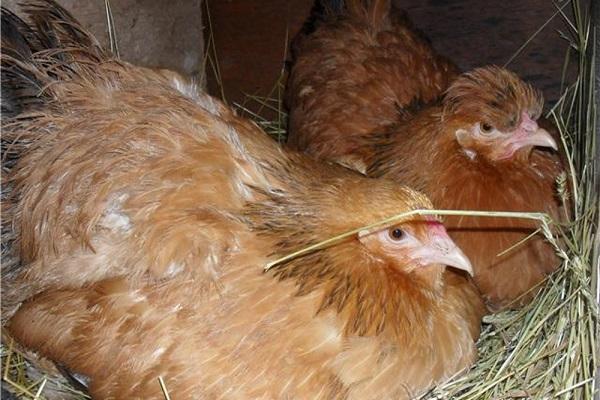

Breeding chickens under a hen at home: translucent with an ovoscope
Hatching eggs from under the hen should not be removed too often. Firstly, this is stress for the chicken, secondly, the shell can be damaged, and thirdly, changes in the ambient temperature can adversely affect the development of the embryo. Therefore, there are special periods when you can get an egg and check its quality. It is recommended to control the development process 3 times during the entire incubation period.
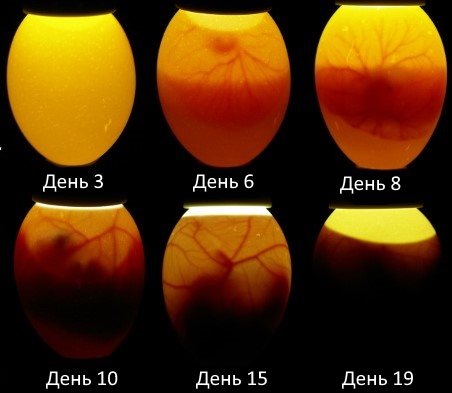

Laying Egg Inspection Chart
| Breeds of chickens | When can I check the egg (by day) | ||
| First time | Second time | Third time | |
| Meat | 7,0 | 11,0 | 18,5 |
| Egg | 6,5 | 10,5 | 18,0 |
Assessment of the condition of the eggs at every check
- First inspection. The embryos cannot be seen at the first examination, since it is in the yolk. But you can see the developed blood vessels. If the future chick died, then the vessels become dark, nondescript, empty. After the first transillumination, all rejected eggs (unfertilized, with dead embryos) must be removed. The rest must be carefully moved closer to the center of the nest.
- Second inspection. At this stage, the blood vessels will tell about the normal state of the eggs - they entangle the bright spot and pass from the blunt to the sharp end (closed allantois). If the embryo develops poorly, then the vascular network does not cover the entire lateral space. The dead embryo is a dark spot without blood vessels. Rejected eggs should be taken and removed from the nest.
- Third inspection. A normally developing chick presents a distinct dark spot, and at the blunt end, the silhouette of the chick's neck can be seen.
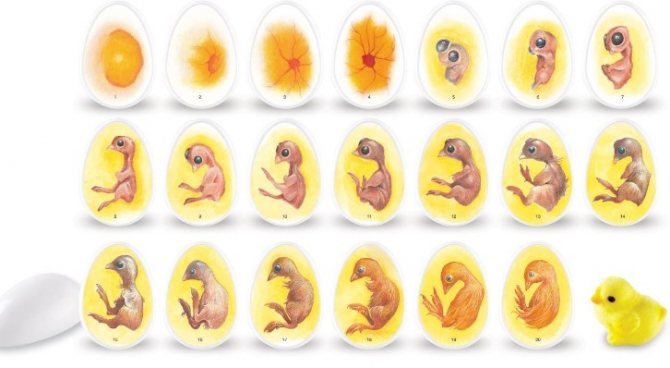

Development of the embryo by day
Laying hen care
After the hen sits on the eggs, the incubation time begins from this moment. At this time, the hen must be looked after. A brood hen that perches on eggs usually does not leave the nest with eggs, she warms future chicks, turning over the incubation material, and takes care. She even forgets about food and drink.
See also
How to make a chicken feeder with your own hands from scrap materials, drawingsRead
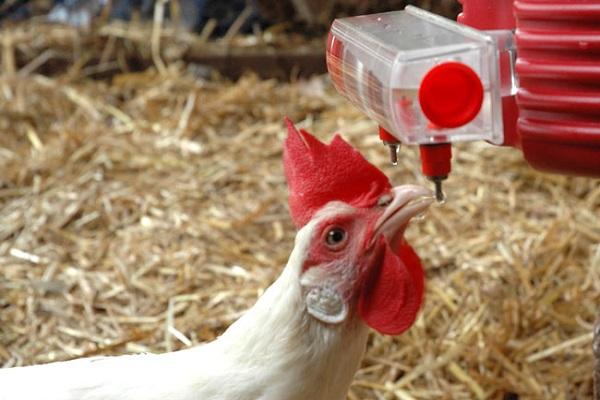

However, many individuals are weaned from the nest, go out to nibble on food, drink water. Therefore, a feeder with grain and a drinker with clean water should be placed near the nest. There should also be a box with ash or soil for "bathing" the bird, as well as gravel or shells. If it does not leave the nest for a long time, so that the brood hen does not become exhausted and die, it must be carefully removed from the nest for eating. The bird will stay for about 10-15 minutes for all these procedures.
While the chicken is absent, eggs can be checked for defective eggs. If so, they are removed.
Pros and cons of using a kludge
Practical experience shows that when used for incubation, the nest allows:
- Get healthier and stronger offspring;
- Do not spend money on expensive incubators (relevant for small and medium-sized farms);
- Forget about raising young animals: the hen takes care of the chickens herself, which saves the owners from additional hassle.
But there are also disadvantages:
- The brooding bird can escape from the nest prematurely, which will cause the death of all embryos;
- It is impossible to hatch a lot of incubation material with one knot;
- In small chicken coops, it can be difficult to find a suitable brood hen with a developed maternal instinct.
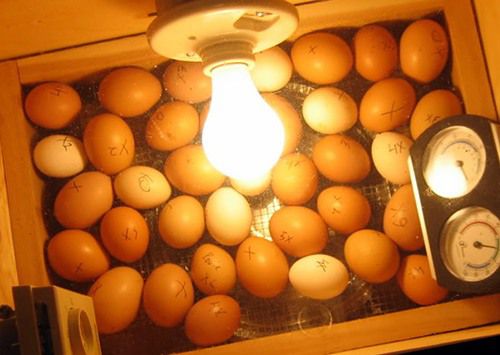

Eggs in an incubator
It is important to remember that in some cases the brooding hen is much more reliable than complex incubators. If the lights are suddenly turned off in a village or village, the eggs in the incubator will die pretty quickly. With a live bird, the situation is much simpler.
How to wean a chicken from hatching eggs
As mentioned above, chickens have a natural biorhythm, according to which the instinct of motherhood awakens in domestic birds.It does not always match the needs of the person. Summer has passed, autumn is coming, and several hens are showing signs of incubation. If there are no appropriate conditions, for example, heat, the chicken will not be able to warm up the chicks, they will die. How to wean laying hens? Experienced poultry farmers have proven methods with which you can wean quails from incubation. The most common and proven method in practice is bathing hens in water. To do this, the body is dipped into a barrel of cold water, after which it stops clucking. With a sharp hypothermia, the chicken experiences tremendous stress.
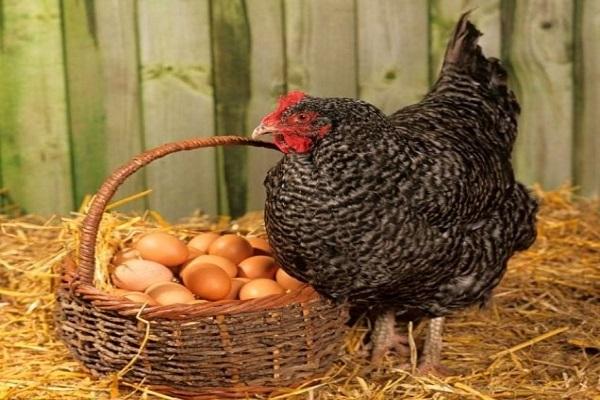

Some owners place such a hen in an empty box without bedding and eggs and for several days. A positive result is obtained, the chicken is weaned from incubation. This method is also used in villages: a few drops of vodka are poured into the bird's beak.
Selection and preparation of eggs for incubation
Chicken eggs can be fertilized or unfertilized. To fertilize an egg, a rooster is needed, and if there is one in a hen herd, then, with a high degree of probability, the eggs of all layers will be fertilized. If there is no rooster in the herd, then all hens will have unfertilized eggs and it is pointless to use them for incubating chickens.
For incubation, it is better to take fresh eggs laid no later than 7 days before the day of laying. Eggs of approximately the same size are chosen for the lining, rejecting those that stand out from the total mass as too small or too large.
The shells of the selected eggs should be uniform in color, there should be no spots or cracks on it. It is necessary to store the eggs intended for lining at a temperature of 12-15 ° and an air humidity of 75%.

